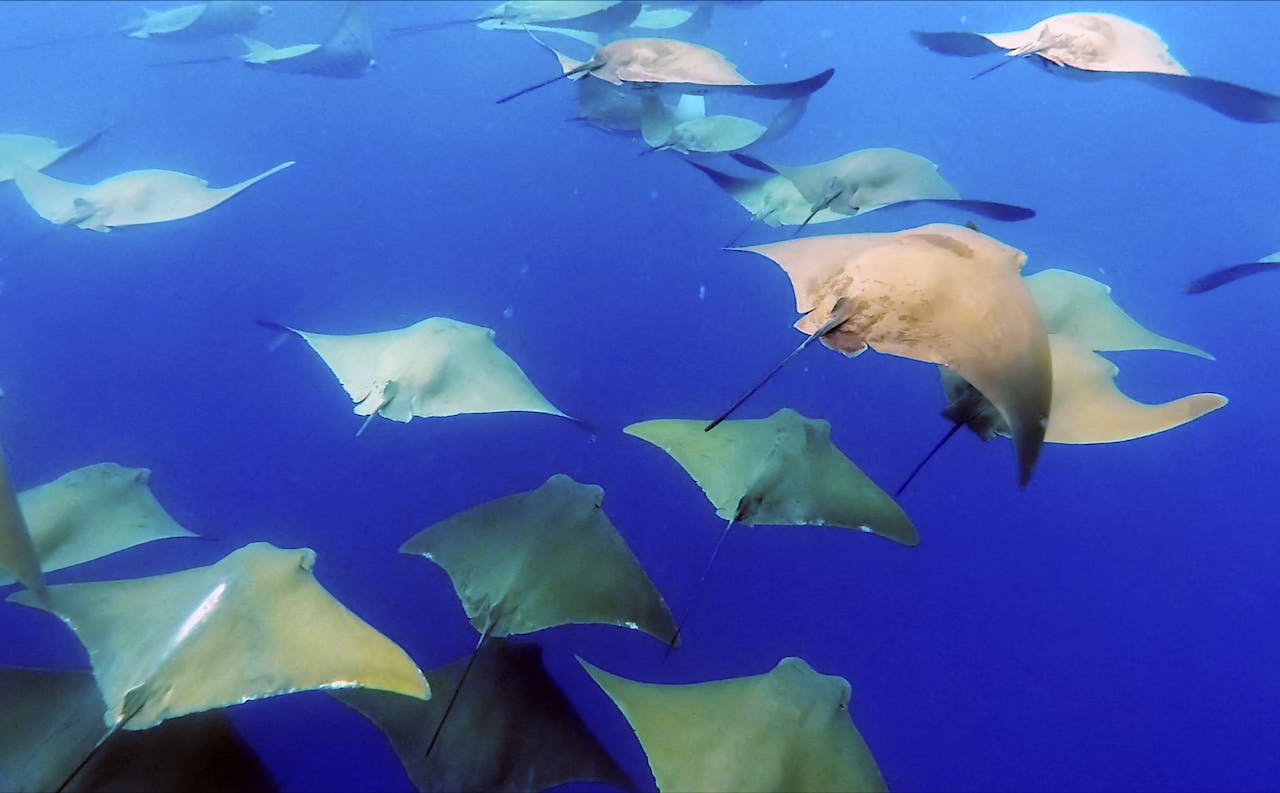Behind the Lens: Filming the Manta Rays of the Galápagos
The pristine underwater world of the Galápagos Archipelago offers free-divers and snorkelers the chance to escape the pace of life on land and swim alongside some of the planet’s most spectacular marine life.
Off the coast of Bartolomé, a small island close to the center of the archipelago, Silversea expedition filmmaker David Padilla remembers his most spellbinding moments with the diverse ray species here. They range from Spotted Eagle Rays, Golden Rays and Mobula Rays to the world’s largest species, Oceanic Manta Rays.
“Bartolomé Island is such an amazing place and what’s mesmerizing about rays is that they are like angels or birds — they move so gracefully underwater and each species swims in a different way,” says David, who has been working as a filmmaker on the Galápagos Islands for four years and is a certified free-diver.
Swimming with gentle giants
David held his breath for up to a minute while diving 10 meters below the surface, enabling him to film the wing-like movements of these gentle creatures.
“Free-diving is like an underwater meditation — you just have to connect to your mind and body and enjoy the moment itself,” says David. “One can see pictures or documentaries, but it’s a little difficult to grasp the immensity of animals like Manta Rays unless you’re there.
“The biggest ray I saw was about six or seven meters in size. You’d think that you’d feel frightened seeing such a huge animal, but actually they’re very peaceful and get scared easily. I was probably not even half of its body-size, so it was crazy to try and get some shots of it,” he adds.

Unforgettable encounters with rays
During one encounter which features in this film, David used his Sony RX100 Va Compact Camera with a Nauticam underwater housing to film the courtship dance of two male Manta Rays swimming around a female.
“They swim so fast and because they are so big, it was very difficult to swim next to them, but after a while I realized they were swimming in a circle,” he says. “They were following a pattern so I was able to predict their movements.”
“There were two Manta Rays that were at least five meters in size feeding while doing backflips in front of me with their mouths open in a way I’ve never seen before. I couldn’t believe what I was seeing,” he says. “At one point I realized they knew that I was there and they didn’t mind my presence — it was amazing to swim with them for 20 minutes.”
Want to see marine life such as Manta Rays and Mobula Rays in person? Check out Silversea’s Galápagos Islands cruises and start thinking about how to choose the right Galápagos cruise for you.



















